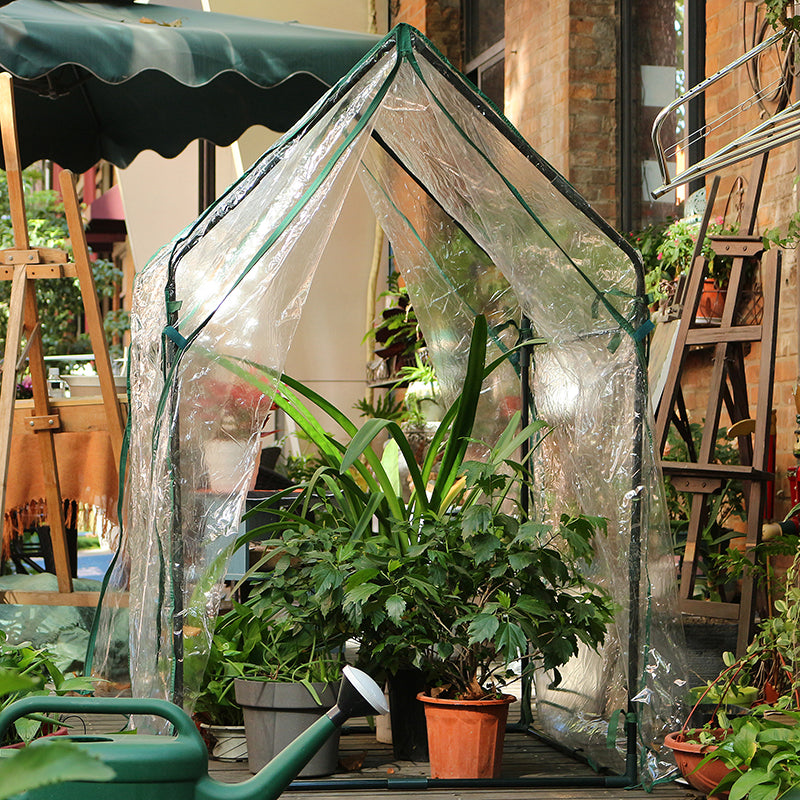
With cold weather upon us in most of North America, we’re all looking at ways to keep our plants—and ourselves!—warm and cozy. While many plants can weather winter temperatures and rebound in the spring, sometimes we want to keep plants growing or support further growth. Winter vegetables and greens are a fine example of this; collards, kale, and cabbage winter well, but they’ll grow better with a bit of support and help. We’ve discussed row covers and their many uses in previous blogs, but now we’d like to focus on how to use row covers in your garden during the winter. With a little effort, row covers can protect your outdoor plants and help them thrive when temperatures drop!
There are two basic kinds of row covers used in the garden: floating row covers and hoop tunnel row covers. As the names suggests, a floating row cover is just a layer of light fabric or plastic sheeting laid directly on top of the plants, while a hoop tunnel is just that—a tunnel made of hoops of plastic or metal with fabric or plastic sheeting attached to it forming a greenhouse of sorts. Both floating row covers and hoop tunnels have their uses. In general, floating row covers are better for smaller or lower lying plants that just need a bit of protection from the cold. They act as a blanket, holding the heat of the ground closer to the plant. Hoop row covers are mounted a bit higher, and thus are better for taller or more mature plants or plants that benefit from additional protection as they grow.
A quick aside: as we’ve written about elsewhere, larger trees and bushes may be too big for row covers and are often better served by wrapping layers of fabric around them directly. Plants in larger planters or the like may benefit from a mini-greenhouse, which can be set up as conditions dictate and then removed later. These options are functional and reusable, lasting year after year with a little care.

So what can you expect from your row cover? The answer greatly depends on the plants in question and weather conditions, but in generally speaking row covers keep temperatures a few degrees warmer and provide frost protection up to 28F/-2C. This makes them useful for several things, primarily either protecting vulnerable plants from occasional cold snaps or intermittent frosts or extending the growing season of already cold-hardy plants. While helpful in many ways, row covers aren’t foolproof—if the weather gets too cold or stays cold for a long time, the temperatures inside the row covers will drop, too. Likewise row covers, like other forms of greenhouse, rely on the sun for heat and work less well in full shade. You can supplement the heating capacity of row covers by adding some composted manure, which emits heat as it breaks down, but that only adds a few degrees at most. So the take-home lesson is to use judicious in your row cover use both in terms of what kinds of plants you cover and where they are located. Row covers can be a great help if uses properly!
Row covers of all sorts are an affordable, versatile, and reusable tool that can help your garden thrive throughout the cooler months. With a little planning and some effort on your part, you can set up your own row cover system and benefit from it year after year. If you’ve used row covers successfully or have any questions about them, please get in touch with us—we love to hear from you!

Leave a comment